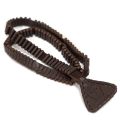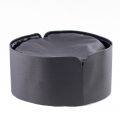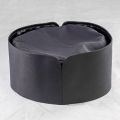This website uses cookies to ensure you get the best experience on our website. Read more
How to Wash a Priest Vestment at Home
 24Apr
24AprThis time nun Agrippina will teach us to wash a priest vestment at home. We filmed a full video guide for you and hope that you will find it useful.
Let us watch it now!
Father Oleg's comments on this video:
1) It is definitely not a rigid model for action.
Nun Agrippina uses techniques and tools that allow her to get assured results. In your particular circumstances, the process will likely need to be adjusted in one way or another, but some techniques will be relevant either way.
2) Russian and Greek/Serbian style phelonia
Our video presents a way to wash a Russian-style phelonion with a hardened collar. With a Greek phelonion, washing is much easier, and machine washing is a relevant option. For the Russian one, hand-washing is preferable for several reasons.
а) it is more effective, as it allows you to give more attention to, and use different agents for different stains (we will discuss this later in a separate letter).
b) you will need a washing machine that is deeper than the width of the collar.
c) we do not machine wash phelonia with stiff collars, so we cannot recommend it, but we assume that stiff collars can be badly affected - especially around the corners - as the drum rotates.
d) … maybe we should have started from this one.
3) The collars can be made in many different ways.
We have the daring to wash the garments made at the Convent because we know that they are made of several layers of woven interfacing. There are also collars made of cardboard or fabric, glued together for stiffness. These should never be wetted. Cardboard does not like water and glue can leave stains. Therefore, be sure to check with the manufacturer about this (preferably, at the time of purchase), and if that is impossible, look inside by slightly ripping up the lining.
4) Choose the detergents yourself
The products used in the video (already covered in our past releases) are as follows: 72% laundry soap, Fairy, Amway SA8 Prewash Spray, Ariel, ACE stain remover, and Lurex Teflon dish sponge.
If none of these is available in your area, or if you choose a less time-consuming option, you will likely find a suitable substitute. For soaking, choose a milder detergent so as not to damage the garment parts (the seaming lace or embroidery) be careful with the concentration and exposure time, and check that the detergent has completely dissolved.
The video presents all the steps of the process - preparation, soaking, washing, rinsing, hang-drying - and shows the techniques used, for example, for placing garments in a soaking tub.
5) Pay special attention to the preparation.
Inspect the outside and the inner lining, be sure to remove any wax you may detect with an iron and toilet paper as much as possible, mark any wax, grease or other stains with thread, and make sure that it will not bleed during the wash. This way, you can easily find and deal with the stains on the wet fabric.
6) A proper hanger.
A separate but important question is choosing the best hanger on which the garment will be dried. Mother Agrippina shows you how to avoid an unpleasant surprise, as some coatings on hangers can release dye when they come in contact with damp fabrics. Additionally, Mother Agrippina demonstrates the optimum shape of the hanger so that the top of the vestment collar is not damaged.
7) The cuffs
During the process, caution should be exercised at all times with the cuffs. For several reasons, its iron rings can shed rust, which is very hard to remove.
 Try to take the phelonion “under the shoulders”, but not “by the shoulders”
Try to take the phelonion “under the shoulders”, but not “by the shoulders”
8) Pious disposal of sacred objects
In this video, there is a moment when the first water in which the vestment is immersed (notably, during soaking) is discarded into a clean well and it is not just our practice. You may also find this practice reasonable, but difficult to implement. Suppose you have a clean well at or near the church, but you plan to wash your vestments at home or have them dry-cleaned.
The following advice can be given: inspect the garment carefully, wash over a clean washbowl a suspect spot that you had not noticed before and may contain residues of the Gifts. Then rinse the vestment in a suitable container and let it drain (letting the water flow in the same sink or well). Put between large terry towels to dry, and take it to the place where you will wash it. Or wait until it dries completely and only than take it home or to a dry cleaner's.
9) Take the phelonion in the right way
And finally, one useful tip. One of the parts of a phelonion that gathers much dirt is the collar. Apart from the fact that dust settles there during storage, our hands are also a culprit. It is common for priests and altar servants to pick the garment by this part when taking the vestment off the rack or giving it to someone else.
Learn to take the phelonion "under the collar", not "by the collar", that is, on the side of the lining, as if using your hands and forearms as a hanger. The collar will be cleaner and safer that way.
We hope that this video and comments have been useful to you. But perhaps you have some better ways of keeping your vestments clean? As always, we are open to your comments, suggestions and feedback.
God bless your good works and protect you.





























